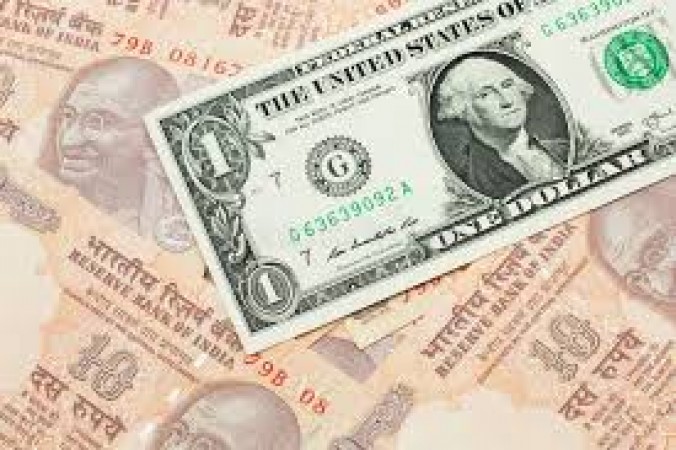
New Delhi: In the latest update from the financial markets, the Indian rupee was seen trading in a narrow range against the U.S. dollar in early trade. The cautious stance by traders and investors came amid global economic uncertainties and mixed cues from international markets. The rupee's stability amidst volatility reflects the cautious optimism prevailing in the Indian forex market.
As the trading session began, the Indian rupee opened at 82 against the U.S. dollar. Analysts noted that the rupee's movement was relatively muted compared to the fluctuations witnessed in recent weeks, indicating a temporary stability in the currency.
Several factors have contributed to the rupee's current trend. Firstly, the ongoing global economic challenges, including the impact of the COVID-19 pandemic and geopolitical tensions, have led investors to adopt a wait-and-watch approach. The cautious sentiment is further compounded by concerns over the pace of economic recovery in various parts of the world, which has caused uncertainty in the currency markets.
Also read:BJP South District President Arrested for Insulting Karunanidhi and Kanimozhi, Details Inside
Additionally, central banks' monetary policies, especially the U.S. Federal Reserve, have been closely monitored by forex traders. Any hints or announcements regarding interest rates, stimulus measures, or quantitative easing policies can significantly influence the rupee-dollar exchange rate. Market participants are keenly awaiting the Federal Reserve's statements for any indications of tapering its bond-buying program or raising interest rates, which could have ripple effects on currencies worldwide.
Furthermore, the current account deficit (CAD) and foreign direct investments (FDI) flows are crucial factors impacting the rupee's performance. India's trade balance and capital flows influence the currency's strength and stability. Policymakers are closely tracking these indicators to ensure a balanced forex market and prevent excessive volatility.
Amid the ongoing uncertainty, the Reserve Bank of India (RBI) has been vigilant in managing the rupee's stability. The central bank intervenes in the forex market when necessary, buying or selling dollars to regulate fluctuations and maintain an orderly movement in the rupee's value. RBI's prudent approach aims to avoid extreme volatility and ensure stability for traders, businesses, and investors.
Also read:Opposition demands PM Modi to make Full statement on Manipur
Market experts believe that the rupee's narrow trading range could persist until significant economic indicators and global factors provide clearer signals for market direction. Investors are eagerly awaiting key economic data releases, such as GDP growth figures, industrial production data, and inflation reports, which can offer insights into India's economic recovery and influence the rupee's movement.
Traders are also closely monitoring the global oil market, as India is a major oil importer. Fluctuations in crude oil prices can impact the country's import bill, trade balance, and, consequently, the rupee's value against other currencies, including the U.S. dollar.
It is worth noting that despite the current stability, forex markets are susceptible to sudden changes and unpredictable events. Geopolitical tensions, unexpected economic data releases, or policy decisions by major economies can swiftly alter market sentiments and lead to sharp movements in currency pairs.
Also read:Charaka (c. 300 BCE): Unraveling the Wisdom of Ayurveda
As the trading day progresses, market participants will keep a keen eye on any emerging trends or developments that may influence the rupee-dollar exchange rate. Traders and investors are advised to exercise caution and adopt risk management strategies to navigate the evolving forex landscape.
In conclusion, the Indian rupee started the trading day in a narrow range against the U.S. dollar, reflecting cautious optimism amidst global economic uncertainties. The currency's stability indicates traders' cautious approach and wait-and-watch stance amid mixed cues from international markets. As the global economic landscape evolves, investors will closely monitor key economic indicators and central bank policies to make informed trading decisions.